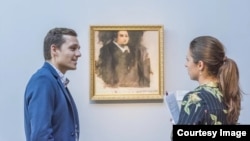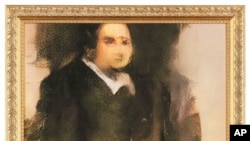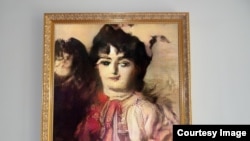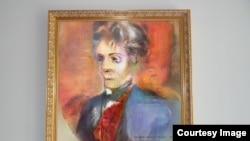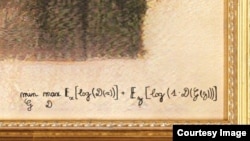A work of art created by artificial intelligence (AI) has been sold by a major art seller for the first time.
The print sold for an unexpectedly large amount of $432,500. The artwork was bought during an auction Thursday at Christie’s, an art house, in New York City. Officials had predicted it would sell for between $7,000 and $10,000. The buyer was not immediately announced.
In a website post, Christie’s said the AI-created work was the first ever sold by a major auction house. It praised the sale as a signal of “the arrival of AI art on the world auction stage.”
The artwork, called “Portrait of Edmond Belamy,” was made by a machine learning algorithm. The AI system was created by members of an art collective called Obvious in Paris, France.
It shows the portrait of a man, looking similar to subjects shown in historical paintings. A description by Christie’s noted that since the man appears to be wearing dark clothes with a white collar, he is possibly a “man of the church.”
Christie’s described some differences of the AI-created work compared to other art it sells. For example, it said some parts of the face were not as clearly defined as those painted by artists. Also, some parts of the print were left empty.
However, Christie’s sale organizer Richard Lloyd said the piece was very similar to many others sold over many years. While the piece was not painted by a major artist, “it is exactly the kind of artwork we have been selling for 250 years,” Lloyd said in a statement.
Three creators from the art group Obvious cooperated on the process that made the print. First, they put a collection of 15,000 portraits into a machine learning system. The portraits were painted by artists from the time period between the 14th and 20th centuries.
Then a tool called the “Generator” made a new image based on the information entered into the system. After that, another tool, called a “Discriminator,” attempted to find differences between the human-made image and one created by the Generator.
“The aim is to fool the Discriminator into thinking that the new images are real-life portraits. Then we have a result,” Obvious collective member Hugo Caselles-Dupré said in a statement.
Obvious has created a series of AI-produced art works. Caselles-Dupré said the team has experimented with other kinds of historical paintings. These included subjects from nature to paintings of the whole human body.
But the results always came out better with portraits. This, he said, supports the idea that AI algorithms are not just good at copying other works, but can actually “emulate creativity.”
Christie’s admits that artwork created by machine learning methods leaves open questions about who or what should get credit for creating the pieces.
“If the artist is the one that creates the image, then that would be the machine,” Caselles-Dupré said. ‘If the artist is the one that holds the vision and wants to share the message, then that would be us.”
Ahmed Elgammal is director of the Art and Artificial Intelligence Lab at Rutgers University in New Jersey. He told Christie’s he believes ownership of AI artwork needs to be shared because humans and machines both take part in the process.
“You could say that, at this point, it is a collaboration between two artists - one human, one a machine. And that leads me to think about the future, in which AI will become a new medium for art.”
In the case of the Portrait of Edmond Belamy, only one “artist” appears at the bottom, where the signed name usually appears. This print does not contain a human’s name. Instead, it lists part of the actual machine learning algorithm that created it.
I’m Bryan Lynn.
Bryan Lynn wrote this story for VOA Learning English, based on a report from Reuters and other sources. Mario Ritter was the editor.
We want to hear from you. Write to us in the Comments section, and visit our Facebook page.
______________________________________________________________
Words in This Story
artificial intelligence – n. ability of a machine to use and analyze data in an attempt to reproduce human behavior
print – n. picture produced on paper
auction – n. sale in which things are sold to the person who offers the most money
algorithm – n. set of steps that are followed in order to solve a mathematical problem or to complete a computer process
portrait – n. painting, drawing, or photograph of a person
collar – n. the part of a shirt, coat, etc. that goes around a person’s neck
emulate – v. to try to be like someone or something that you admire or think is successful
collaboration – n. the activity of working together to create or achieve a common goal



